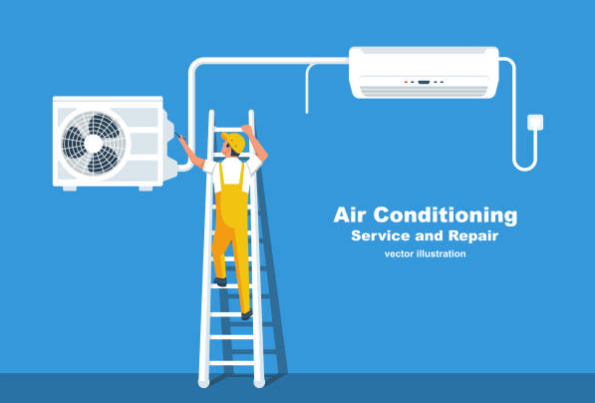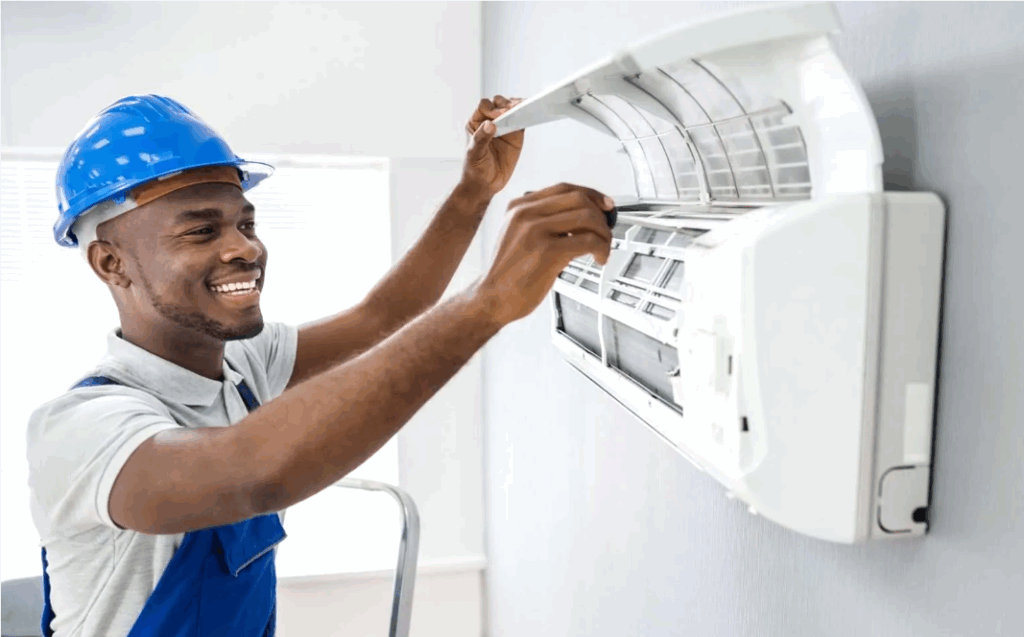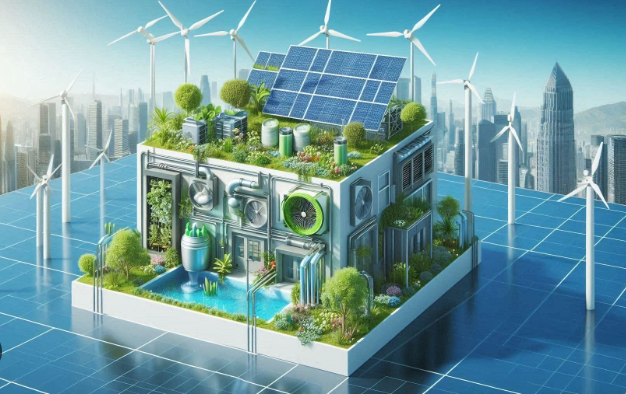
HVAC Course in Visakhapatnam | Create a comprehensive guide outlining the various HVAC courses available, including certification programs, online learning options, and hands-on training opportunities. Highlight the benefits of each course type and provide insights on how to choose the right program based on career goals.
HVAC Course in Visakhapatnam | Develop a series of expert interviews with HVAC professionals who have successfully completed various courses. Discuss their experiences, the impact of their education on their careers, and advice for aspiring HVAC technicians. This can be presented as a blog post or a video series.
HVAC Course in Visakhapatnam | Produce an infographic that visually represents the HVAC training pathway, detailing the steps from initial education to advanced certifications. Include statistics on job placement rates, potential earnings, and the growing demand for skilled HVAC technicians in the industry.
Based on the search results, while some training centers in Visakhapatnam focus on related technical fields, more specialized HVAC courses are primarily offered by established national providers with either local branches or online options.
This provider offers various online and classroom HVAC courses for beginners and experienced professionals, including HVAC Design Level I and Level II. They have a global presence and offer a comprehensive syllabus covering fundamentals, design software like HAP, and practical projects.

HVAC Course in Visakhapatnam | An Autodesk Authorised Educational Partner, IFS Academy offers instructor-led online training programs focused on HVAC design and drafting using software like AutoCAD and HAP. The curriculum is comprehensive and concludes with an Autodesk Authorized Certificate of Completion.
For building professionals, L&T EduTech provides an online course on “Ventilation & Air Conditioning System Design for Buildings.” The program is led by subject matter experts and covers design concepts, load calculations, and equipment selection.
This institute specializes in MEP (Mechanical, Electrical, and Plumbing) and offers both online and classroom training. Their HVAC Design and Drafting course is for both entry-level and experienced engineers and covers a wide range of systems and calculations.
For self-paced and affordable learning, platforms like Udemy have a wide range of HVAC courses, including modules on fundamentals, air distribution, design software, and load calculations.
- For hands-on practical skills: Contact local centers like the Skill Development Institute or check for national providers with local branches.
- For flexibility and a comprehensive curriculum: Online courses from national providers are a great way to learn at your own pace while earning recognized certification.

What is an HVAC System?
An HVAC system is Heating Ventilation and Air Conditioning system. That is used for conditioning of air in a big area where a usual air conditioner cannot be used. It contains a boiler, chiller cooling tower and air handling unit.
This system is used to control the temperature of a designated space with the control of the moisture in the air, supply the area with fresh air by controlling the carbon dioxide and oxygen level. It also controls the contamination of airborne particles by regulating the movement of air.
The HVAC system can effectively control the air conditions of a given parameter through heating by adding the thermal energy in an area to increase the temperature; the cooling is done through decreasing the thermal energy in an area to decrease the temperature. To increase the humidity in the area water vapors are used and it is called humidifying the area. To decrease the humidity, water vapors are removed from the area and it is called dehumidifying the area.
The air is cleaned by removing the smoke, dust or pollens that contaminate the air. The air is ventilated by maintaining the gas ratio which can be done by adding external fresh air. Lastly, the system controls the air movement that is supplied in a space which ensures that those in the place are comfortable. The following are the basic components of an HVAC system and the role they play to keep the condition suitable.

This is the largest and the main component of the commercial HVAC system. It heats the air that is supplied the system; this can be done through the heat pump, solar energy, or the burning of the natural gasses. Inside the furnace, there is a heat exchanger which helps to switch on when the furnace is activated. It pulls the cold air and heats and circulates the air out through the vents.
The thermostat can either be set manually or programmed in advance to the desired temperature. It is easily visible and accessible part of the system. The thermostat can trigger the heat exchanger or evaporator coil-condensing unit to circulate a space with cold or warm air.
This unit carries the refrigerant substance to the condensing unit for vaporization and returns it to the evaporator in liquid form. They are narrow tubes usually resistant to heating and cooling.
This unit transports the cooled or the heated air across the room. The ducts are made of lightweight aluminum. The ductwork is connected to the vent that transfers cooled or heated air to individual rooms. They are usually located near the ceiling and are fronted with angled slats. They can be manually controlled to regulate the heating or cooling of the space that they are directed.
the design of an HVAC system for a multiplex building. It begins with an introduction to air conditioning and controlling indoor air properties. It then discusses components of summer, winter, and year-round air conditioning systems. The document provides calculations to determine the cooling load of a sample classroom and design considerations for ductwork. It emphasizes the importance of HVAC system maintenance for health, efficiency, longevity, and reducing emergency repairs.
Whether you’re a homeowner seeking an upgrade for your current HVAC system or simply interested in the different types of HVAC units, this article will provide you with essential insights. Additionally, we will guide you on how to choose the right HVAC system for your home, along with tips on installation and maintenance. Let’s begin our exploration of HVAC systems!
An HVAC system, standing for Heating, Ventilation, and Air Conditioning, is vital for maintaining comfort and optimal indoor air quality in your home. An HVAC system regulates temperature, humidity, and air circulation within a home, consisting of interconnected components working in unison to achieve the desired indoor climate. The core components of an HVAC system include
- Heating: This component provides warmth during colder months through various methods like furnaces, boilers, or heat pumps.
- Ventilation: Ventilation systems expel stale air and introduce fresh outdoor air, filtering out pollutants, allergens, and odors to enhance indoor air quality.
- Air Conditioning: This component cools the indoor environment during warm weather, ensuring a comfortable temperature.
HVAC Course in Visakhapatnam | HVAC systems provide thermal comfort, allowing homeowners to maintain a consistent indoor temperature year-round, which is especially crucial during extreme weather conditions. Secondly, they help regulate humidity levels, balancing excess moisture that could lead low humidity that may cause dryness and discomfort. Lastly, HVAC systems help improve indoor air quality by filtering out pollutants, allergens, and contaminants to promote overall well-being.
Types of HVAC Systems
HVAC systems (Heating, Ventilation, and Air Conditioning) come in several types, each designed to provide optimal climate control in your home. Here’s an overview of the most common types.
Split Systems

A split HVAC system is a heating system or air conditioning system that has indoor and outdoor units connected to each other with copper tubing. The outdoor portion of the system typically contains the condenser and compressor, while the indoor portion of the system has an evaporator coil and indoor air handling unit that sends the air through the ductwork in your home.
Ductless Mini Split Systems
HVAC Course in Visakhapatnam | Ductless mini split systems do not require ductwork and consist of an outdoor condenser unit connected to one or more indoor units. Ductless mini-split systems provide zoned heating and cooling, allowing independent temperature control in different areas of your home. Ductless mini split systems are ideal for retrofitting older homes or adding climate control to individual rooms. Packaged HVAC Systems In packaged systems, all components (compressor, condenser, and evaporator) are housed in a single unit outside of the home. These units are typically installed at homes with limited indoor space for separate units. Packaged products can be powered three different ways. Cooling-only packaged products run exclusively on electricity, gas heating and cooling units use gas for heating and electricity for cooling., while heat pump packaged products use electricity to both heat and cool.
Geothermal HVAC Systems
HVAC Course in Visakhapatnam | Geothermal HVAC equipment use the earth’s stable underground temperature to heat and cool homes. Pipes are buried underground, circulating fluid that absorbs or dissipates heat. Geothermal heat pumps provide energy-efficient performance to give you comfortable indoor comfort within your home. Geothermal HVAC systems come in four different loop types (horizontal, vertical, pond, and open loop) which all work differently to extract water to heat and cool your home.
Types of HVAC Units
HVAC Course in Visakhapatnam | HVAC equipment refers to the various devices and components used to manage heating, cooling, ventilation, and air quality in a building. Here’s a breakdown of the common types of HVAC units.
Heat Pumps
A heat pump transfers heat between indoors and outdoors to provide both heating and cooling. In heating mode, it extracts heat from the outside air (or the ground for a geothermal heat pump) and moves it inside, while in cooling mode, it reverses the process, removing heat from inside and releasing it outdoors. Heat pumps are versatile and work well in moderate climates for year-round comfort.
Air Conditioners
An air conditioner cools indoor spaces by extracting heat and moisture from the air. It works by circulating refrigerant through a system of coils, where warm air is absorbed, cooled, and then blown back into the room, while the extracted heat is expelled outside. This process creates a comfortable indoor environment by reducing temperature and humidity.
Furnaces
A furnace heats air and distributes it through a home via ductwork. Furnaces have three different fuel types: natural gas, oil, and electricity. Modulating furnaces can adjust heat output in small increments for maximum efficiency, two-stage furnaces can operate at two different speeds (low and high), improving efficiency and comfort. Single-stage furnaces operate at full capacity or are off.



